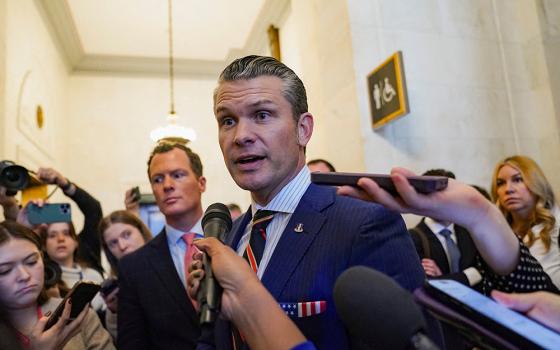Greetings from Tea Party country. Most people think of Connecticut and they think of the wealthy suburbs of New York City, where David Letterman and Joanne Woodward live. Or they think of the old shore towns, Old Saybrook, Old Lyme, Groton, Mystic and Stonington, where “old money” homes are elegant and understated, a far cry from the mansions of the Hamptons on Long Island.
I am from what is known as the “Quiet Corner” of the Nutmeg State, an area that once had dozens of dairy farms and other agricultural enterprises, but is now mostly a bedroom community for the nearby University of Connecticut.
This part of Eastern Connecticut is also Tea Party country, both historically and today. In the run up to the American Revolution, the eastern part of Connecticut supplied the bulk of Patriot forces. General Israel Putnam, who commanded the patriot forces at Bunker Hill and urged his men to conserve their scarce ammunition with the cry, “Don’t shoot ‘til you see the whites of their eyes” was from the next town over. This part of Connecticut had been the most prone to embracing “New Light” ministries after the Great Awakening, one of the key indicators of support for revolt, compared to the western part of the state, which not only remained devoted to traditional forms of Calvinism but even hosted many Anglican congregations, all of whom were the most likely to remain loyal to Great Britain during the Revolutionary War.
There is a more recent vintage of Tea Party activism, although it was not called that at the time. Just as “New Light” adherence in religion portended commitment to the revolutionary cause, those areas that supported the candidacy of Ross Perot in 1992 are more likely to be hotbeds of Tea Party activism today. In 1992, Perot took 18.91 percent of the vote nationally, but in Connecticut, he claimed 21.58% of the vote. In the three most eastern counties of the state, Tolland, New London and Windham, Perot garnered, respectively, 27.1%, 27.8% and 28.4% of the vote. The 28.4% percentage haul for Perot in Windham County, where I grew up, was higher than Perot’s vote total in any of the fifty states save Maine, where Perot ran up an astonishing 30.4% of the vote, actually beating incumbent President, and summertime Maine resident, George H.W. Bush.
So, yesterday, I was not surprised to find a pamphlet from Connecticut’s Second District “Tea Party Patriots” in the mudroom at the Vanilla Bean, a local eatery that is a hugely popular destination in Northeastern Connecticut. The pamphlet directs you to their website, lists the weekly meetings – usually, two per week, one in each half of the state – and features pictures of rallies across the state and in Washington, D.C. The pamphlet includes a Mission Statement: “We are a grassroots effort to stop wasteful spending by our government. Our principals [sic] are framed in the Declaration of Independence, The Constitution of the United States of America, and the Bill of Rights. Further, our goal is to remind the Citizens of the United States of America of their rights, especially; ‘The right of the people peaceably to assemble and to petition the Government for redress of grievances’ and ‘The Right to Life, Liberty and the Pursuit of Happiness.’” On the reverse side of the pamphlet, they spell “principles” correctly and mention not their “demand that our Elected Officials uphold the Constitution.”
Tomorrow, Connecticut holds a primary and one of the Tea Party favorites, Daria Novak, is poised to win the GOP nomination in the Second Congressional District, which covers the entire eastern half of the state. Novak won the endorsement of the area’s leading newspapers, but it was more than a little half-hearted. “The three GOP contenders,” the newspaper’s editors wrote in announcing their endorsement, “Novak, the party’s endorsed candidate and her two challengers…lack any meaningful understanding of the issues, relying instead on generalized talking points and bumper sticker slogans that lack depth, detail or vision.”
Connecticut’s Second District is a swing district. Twice in the past twenty years, the race has been decided by under 100 votes. In 2006, Democrat Joe Courtney defeated incumbent Rob Simmons by 83 votes and in 1994, Democrat Sam Gejdenson fought off a Republican challenger by a 21-vote margin. So, this year, you would expect the GOP to have Connecticut’s Second District clearly in their sights. Instead, three weak challengers, none of whom have raised more than $50,000 as of July 1, assure that the Democrats will hold this swing seat. The same is true in Connecticut’s other swing district, the Fifth, where incumbent Chris Murphy is expected to win easily. Only in Connecticut’s Fourth District, a traditional Republican stronghold now held by Democrat Jim Hines, does the GOP have a chance at picking up a seat in Connecticut this November.
The more interesting place to look for Tea Party influence in Connecticut is down ballot. Connecticut’s Republican Party has a very thin bench, with Democrats holding veto-proof majorities of both houses of the state legislature. Democrats hold 114 seats in the lower house to 36 for the GOP, and 24 of the 36 seats in the state Senate. These lopsided majorities have not resulted in effective governance and Connecticut faces huge budget shortfalls for the foreseeable future. It will be interesting to see how much of a dent the GOP makes in those Democratic majorities and how many of the successful GOP candidates come from the ranks of the Tea Party.
Politico.com has a great article today on the Tea Party and fundraising. The thing about non-traditional approaches to winning elections is that everyone thinks they are bizarre – until they win.




